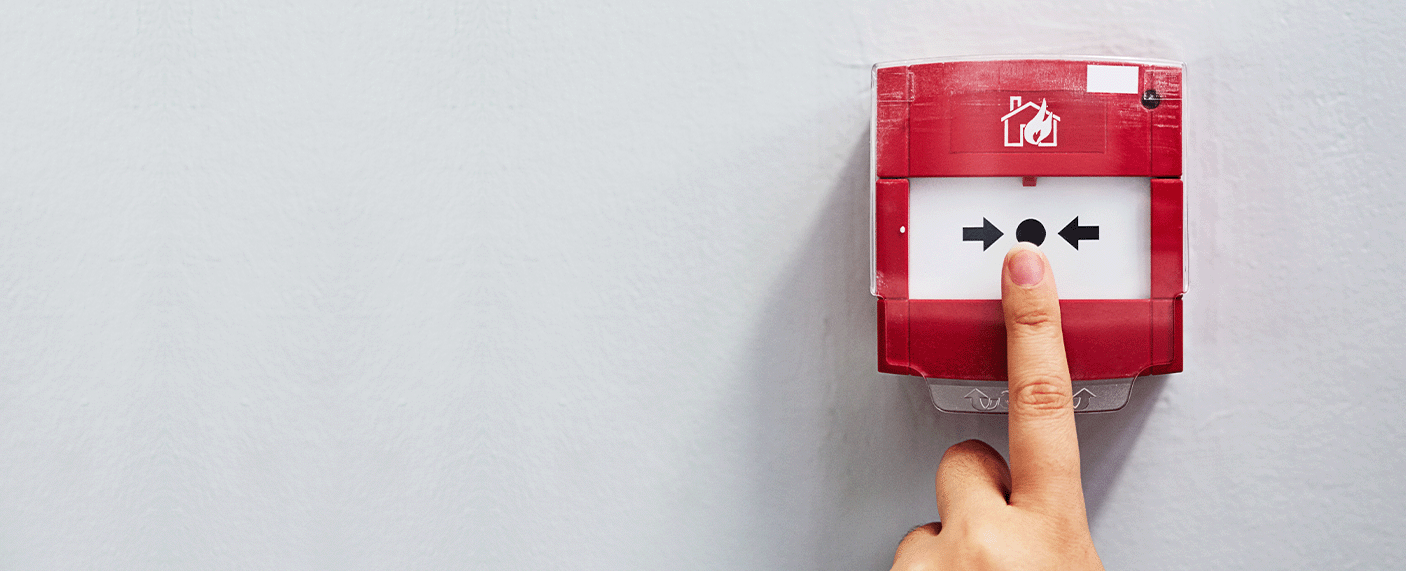In today’s world, safety and security have become paramount concerns for homeowners and business owners alike. One critical aspect of safety that often gets overlooked is the installation and maintenance of fire alarm systems. These systems play a vital role in protecting property and lives by providing early warning in the event of a fire. Understanding their importance and ensuring they are properly installed and maintained can be the difference between a small incident and a devastating disaster.
In commercial buildings across the UK, fire safety is a responsibility that protects lives, livelihoods, and legacy. From office and retail premises to healthcare settings and educational facilities, fire alarm systems play a vital role in ensuring that, should the worst happen, people can evacuate quickly and emergency services can respond without delay.
Despite this, many commercial properties still fall short when it comes to the correct installation and ongoing maintenance of these critical systems. Understanding the importance of a properly designed and regularly serviced fire alarm system is essential for anyone involved in building management, facilities, or compliance.
Fire alarm systems are designed to detect the presence of fire related phenomena such as smoke, heat, or flames. Once detected, these systems alert the building occupants through audible and visual alarms, allowing them to evacuate safely and promptly. The system may also automatically notify emergency services, ensuring that help is on the way as quickly as possible.
Why Fire Alarm Systems Matter
In 2022/23, fire and rescue services in England attended over 11,000 primary fires in non-residential buildings – with over 20% occurring in industrial or commercial settings. Early detection is key to preventing injury, damage, and disruption, and that’s exactly what a well-maintained fire alarm system provides.
A fire alarm system detects smoke, heat, or flames and activates audible and visual warnings to prompt a safe evacuation. Some systems are also configured to alert emergency services directly, saving valuable minutes in a crisis.
Components of a Fire Alarm System
A typical fire alarm system consists of several key components:
- Smoke Detectors: These devices detect the presence of smoke, which is often the first sign of a fire. Smoke detectors can be photoelectric, ionization, or dual sensor types, each with its own method of detection.
- Heat Detectors: These sensors are designed to detect changes in temperature. They are particularly useful in environments where smoke detectors may not be as effective, such as kitchens or garages.
- Fire Alarm Control Panel (FACP): This is the central hub of the fire alarm system. It receives information from the detectors, processes it, and triggers the alarm if necessary.
- Alarm Sounders and Beacons: Ensure building occupants are alerted quickly and clearly.
- Manual Call Points: Enable individuals to raise the alarm if they see a fire before it is detected automatically.

The Importance of Proper Installation
Fire alarm systems are only as effective as their installation. Poorly designed or incorrectly fitted systems may trigger false alarms – or fail to operate at all in a real fire.
Compliance with UK Regulations
In the UK, commercial fire alarm systems must comply with BS 5839-1:2017 which sets out best practices for the design, installation, commissioning, and maintenance of fire detection systems in non-domestic buildings. Professional installation ensures that your system is compliant with both national standards and local authority requirements.
Strategic Detector Placement
Correct placement of detectors is essential for early warning. For example, detectors must avoid air vents or areas with high condensation, which could cause false alarms. At Drax360, our engineers are trained to design and install systems with optimal sensor placement, tailored to your building’s risk profile.
Integration with Other Systems
In modern commercial buildings, fire alarms often work alongside sprinkler systems, smoke ventilation, and even access control. Drax360 ensures your fire detection system integrates seamlessly with other life safety infrastructure.
The Role of Regular Maintenance
Installation is only half the story. To remain compliant and effective, fire alarm systems must be regularly maintained by a competent person, in line with BS 5839-1 requirements.
Weekly Testing
The standard recommends weekly tests to verify that the system’s manual call points and sounders are operational. Drax360 supports property managers with automated and remote testing solutions that reduce manual workload and enhance audit readiness.
Preventative Servicing
Fire alarm systems should undergo a biannual service as a minimum, where certified engineers inspect the control panel, detectors, wiring, and power supplies. Drax360 provides planned maintenance contracts that ensure every component is tested, calibrated, and compliant.
Battery and Component Checks
All backup batteries and components are monitored for degradation or faults. This proactive approach prevents system failure during power loss – one of the key causes of alarm failure in emergencies.
Updating Technology
Fire alarm technology is constantly evolving, with newer systems offering improved detection capabilities and additional features. Regular maintenance is an opportunity to assess whether your current system is still suitable or if upgrades are necessary to maintain optimal protection.
Benefits of a Well-Maintained Fire Alarm System
Having a properly installed and regularly maintained fire alarm system offers several significant benefits:
Early Detection and Evacuation
A well-maintained system ensures early detection of fires, allowing occupants to evacuate quickly and safely. This early warning can significantly reduce the risk of injury or death.
Minimised Property Damage
By detecting fires early, fire alarm systems can help minimise property damage. The quicker a fire is detected, the sooner emergency services can respond, potentially saving valuable assets and reducing repair costs.
Peace of Mind
Knowing that your fire alarm system is functioning correctly provides peace of mind for building occupants. They can feel confident that they will be alerted promptly in the event of a fire, allowing them to focus on their daily activities without constant worry.
Compliance and Insurance Efficiency
Many insurers require robust fire alarm systems as part of cover conditions, and a well-maintained system could reduce premiums.
How Drax360 Can Help
At Drax360, we specialise in fire alarm system design, installation, and lifecycle maintenance for commercial buildings of all sizes and complexities.
Whether you’re upgrading an outdated system or installing fire protection in a new build, we ensure:
- Compliance with BS 5839-1 and relevant fire safety legislation
- Expert integration with your wider life safety systems
- Digital reporting and audit trails for full transparency
- Tailored maintenance contracts and remote monitoring capabilities
Drax360 has more than 30 years of expertise in fire safety and compliance. The team collaborates with facilities managers, estate teams, and duty holders to minimise fire risks and maintain building safety.
Fire alarm systems are a critical investment in the safety of your building and its occupants. When properly installed and maintained, they provide early warning, ensure compliance, and ultimately save lives. With Drax360, you gain a trusted partner who understands the technical and regulatory landscape and supports you every step of the way.
Speak to us today to find out how we can assist you with your fire alarm installation and maintenance.





